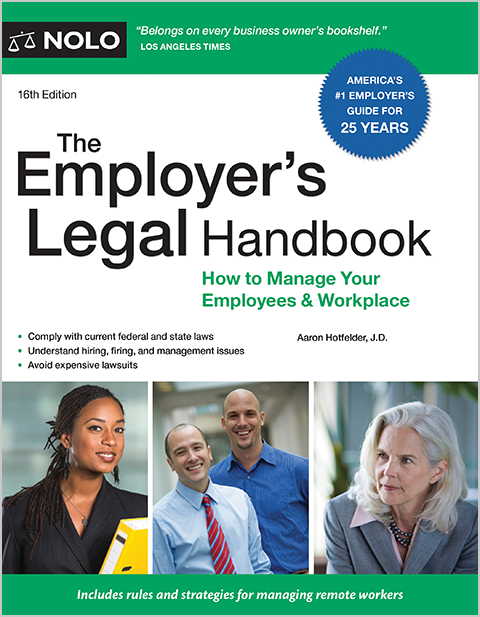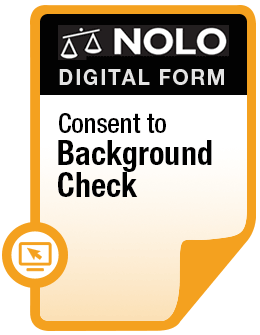Employers must follow certain rules when providing vacation or paid time off in California.
In California, employers are not required to provide any paid vacation or paid time off (PTO) to their employees. However, studies have shown that giving employees time off to relax benefits not only employees, but also employers. Happier, healthier employees usually mean greater productivity and employee retention for employers. Because of this, many employers choose to offer vacation as a benefit of employment.
Employers who choose to offer vacation must follow certain guidelines. California law considers accrued vacation to be a form of wages that have already been earned by the employee. Among other things, this means that accrued vacation cannot expire and must be paid out to an employee upon termination or separation from the employer. The same rules apply to PTO.
Sick leave is not subject to the same rules as vacation and PTO. California employers must provide at least five days or 40 hours of paid sick leave per year, though some cities require more. (To learn more, see our article on California paid sick leave)
Vacation Accrual
In general, vacation accrues over time as an employee works. For example, if a vacation policy gives an employee ten days of vacation each year, he or she will accrue five days of vacation after working for six months.
Employers can designate a waiting period at the beginning of employment before vacation starts to accrue, though. The waiting period often correlates with the 90-day introductory period, but can be as long as the first year of employment.
Employers can also give vacation to certain groups of employees but not others, as long as they don't discriminate based on a protected characteristic, such as race or gender. For example, employers may give vacation only to full-time employees or only to managers.
Vacation Accrual Caps in California
Unlike some other states, California does not allow "use-it-or-lose-it" vacation policies. Under a "use-it-or-lose-it" policy, accrued vacation must be used by a certain date – usually by the end of the year – or it is forfeited. Because accrued vacation is considered earned wages, use-it-or-lose-it policies are seen as illegally withholding wages owed to employees.
Employers can, however, place a cap on vacation accrual. In other words, once employees reaches a certain number of days, they will stop accruing vacation until they use some of their vacation. This allows employers to maintain some control over vacation accrual and prevent employees from racking up unreasonable amounts of vacation time.
While there's no set number for a permissible cap, the California Department of Labor Standards Enforcement (DLSE) – the agency that enforces California wage and hour laws – has provided some guidance.
In the past, the DLSE has held that a vacation cap could be no less than 1.75 times the annual accrual rate. However, the DLSE has since withdrawn that bright line rule and instead states only that the cap must be "reasonable." While a 1.75 cap is probably still the safest ratio, a 1.5 cap may also be within legal limits. The example below shows how the vacation cap works.
Example. Sunshine Inc. provides all full-time employees with ten days of paid vacation each year. Sunshine's vacation policy has a cap of 1.75 times the annual accrual rate, or 17.5 days (1.75 × 10 days). An employee's vacation will roll over year to year, but once he or she reaches 17.5 days, no more vacation will accrue until the vacation bank falls below that amount.
Vacation Scheduling
Employers have a lot more freedom to shape their vacation policies when it comes to scheduling. In general, employers can decide when and how employees may schedule their time off from work.
An employer may, for example, require that employees submit vacation requests a certain number of days or weeks in advance. Employers can also set aside certain "blackout" dates during which no employees may take vacation, such as the holiday season for a retail business or the tax season for an accounting firm. And, an employer can place limits on the number of employees who can be out on vacation at the same time.
As long as the employer's decisions are not discriminatory based on race, sex, religion, disability or another protected class under federal or California law, the employer is free to set the parameters in which vacation is scheduled.
Vacation Payout on Separation
All accrued, but unused, vacation must be paid to an employee who separates from the employer. Vacation is considered earned wages and must be paid at the same time as the employee's final wages:
- If an employee is fired, the final paycheck is due at the time of discharge.
- If an employee quits with 72 hours' notice, the final paycheck is due at the time of quitting.
- If an employee quits with less than 72 hours' notice, the final paycheck is due within 72 hours of the time of quitting.
Paid sick days that are part of a separate sick leave policy are not subject to the same rules and do not have to be paid out when an employee leaves the company. However, when sick days are included in a general PTO policy, all of the PTO is treated like vacation and must be paid out on separation.
Personal Days and Floating Holidays
Some employers also offer a set number of "personal days" or "floating holidays" each year. In general, holidays that are tied to a specific event don't need to be paid out upon separation. For example, if an employer offers paid holidays for Christmas, New Year's, or the employee's birthday or work anniversary, these do not need to be paid out.
But, when the personal days or floating holidays are not tied to a specific event, and may be taken at any time during the year for any reason, they are treated as vacation. In other words, personal days or floating holidays cannot be subject to a use-it-or-lose-it policy and must be paid out upon separation.
Advances on Vacation
Employers are free to advance vacation to employees, but they cannot deduct advanced vacation from a final paycheck if an employee leaves earlier than expected. For example, if an employee has only one week of accrued vacation, but takes two weeks of vacation and then quits, the employer cannot deduct the week of vacation from his or her final paycheck.
Waiting Time Penalties
Because vacation is considered earned wages, an employer may be liable for "waiting time penalties" for failing to timely pay out vacation with the final paycheck. The waiting time penalty is the employee's average daily wage, for up to 30 days. Employees who don't receive their vacation in their final paychecks can file a wage claim with the DLSE, or sue in court, to recover this penalty.
When to Consult an Employment Law Attorney
If your employer has failed to follow California's rules on vacation accrual, or hasn't paid out your final paycheck on time, consider contacting an employment law attorney to discuss your legal options.
Frequently Asked Questions About PTO in California
Does California law require employers to provide paid vacation or PTO?
No. California law does not require employers to offer paid vacation or paid time off (PTO). However, once an employer chooses to provide vacation benefits, those benefits become a form of earned wages and are protected under state labor laws.
What is the difference between vacation and PTO?
Vacation is typically time off for personal rest or recreation, while PTO is a combined leave bank that may include vacation, personal days, and sick time. Under California law, PTO that includes vacation is treated the same as vacation for wage and payout purposes.
Is vacation pay considered earned wages in California?
Yes. Accrued vacation is considered earned wages under California Labor Code section 227.3. Because of this, vacation time can't be taken away once earned and must be paid out when employment ends.
Can vacation time expire in California?
No. Accrued vacation can't expire or be forfeited. California prohibits "use-it-or-lose-it" vacation policies because they effectively take away earned wages.
Can an employer limit how much vacation an employee accrues?
Yes. Employers may set a "reasonable" cap on vacation accrual. Once the cap is reached, vacation stops accruing until some is used. While the Department of Labor Standards Enforcement (DLSE) no longer enforces a strict 1.75x rule, many employers use a cap between 1.5 and 2 times the annual accrual rate to stay compliant.
Can employers require a waiting period before vacation begins to accrue?
Yes. Employers can require a waiting period—often 90 days or up to the first year of employment—before employees begin accruing vacation. The waiting period must be clearly stated in the written policy and applied prospectively.
Can employers offer vacation only to certain employees?
Yes, as long as the distinction is not discriminatory. For example, employers can offer vacation only to full-time workers or management-level employees, but can't base differences on protected traits like race, gender, or religion.
What happens to unused vacation when an employee leaves a job?
All unused, accrued vacation must be paid out at the employee's final rate of pay. The payout must be included in the employee's final paycheck according to the same timing rules that apply to all final wages.
How soon must vacation be paid after an employee leaves?
If an employee is fired, vacation must be paid immediately with the final paycheck. If the employee quits with at least 72 hours' notice, payment is due at the time of quitting; otherwise, it must be paid within 72 hours.
Are paid sick days treated the same as vacation in California?
No. Paid sick leave is governed by the Healthy Workplaces, Healthy Families Act of 2014. As of 2025, employers must provide at least five days or 40 hours of paid sick leave per year, but unused sick leave does not need to be paid out upon separation unless it is part of a general PTO policy.
Can employers set rules about when vacation can be taken?
Yes. Employers can require advance notice for vacation requests, limit how many employees may take vacation at once, and set blackout periods during busy seasons. These scheduling limits must be applied fairly and consistently.
What is the difference between a vacation cap and a use-it-or-lose-it policy?
A vacation cap lawfully pauses accrual once a certain limit is reached, while a use-it-or-lose-it policy unlawfully takes away earned vacation. Employers may use caps to manage vacation balances but cannot force forfeiture of accrued time.
Are personal days or floating holidays treated like vacation?
It depends on how they are structured. If they are tied to a specific event, like a birthday or work anniversary, they don't have to be paid out. If they can be used at any time for any reason, they are treated like vacation and must be paid out when employment ends.
Can employers deduct advanced vacation if an employee quits early?
No. Employers cannot deduct advanced or unearned vacation from an employee's final paycheck. California law prohibits any deduction that would effectively take back earned wages.
What should employees do if their employer fails to pay out vacation at termination?
Employees can file a wage claim with the California Labor Commissioner's Office (DLSE) or sue in court to recover unpaid vacation. If payment is willfully delayed, the employee may also be entitled to waiting time penalties equal to one day's wages for each day the final pay is late, up to 30 days.



